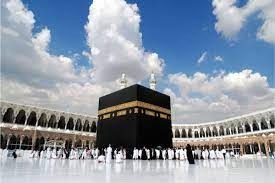Temperatures in Makkah soaring past 50°C (122°F) last year and over 1,300 pilgrims tragically losing their lives due to heat-related issues, Saudi Arabia is leaving nothing to chance for Hajj 2025. Authorities are deploying cutting-edge artificial intelligence, expanding shaded areas, and installing hundreds of misting machines to protect over a million pilgrims expected to gather for one of the largest annual religious events in the world.
In an exclusive interview with AFP, Saudi Arabia’s Hajj Minister Tawfiq al-Rabiah revealed the kingdom’s comprehensive plan to mitigate the risks posed by the extreme desert heat. “One of the big challenges we always face is the increasing temperature across the different years,” he said, adding that it’s a top priority for this year’s pilgrimage.
A Technological Leap for Crowd Safety
Among the most significant innovations is the use of advanced AI to monitor and manage crowds. Live video feeds—including footage from a newly deployed fleet of drones—will be processed using artificial intelligence software to provide real-time feedback on crowd movement, density, and safety.
This approach builds on painful lessons from the past. In 2015, a deadly stampede claimed the lives of nearly 2,300 people. Today, AI tools offer a powerful new way to manage risks proactively and swiftly.
Cooling the Journey
To battle the oppressive heat, over 400 cooling units and 50,000 square metres of new shaded space will be installed across key pilgrimage routes. These enhancements come alongside previously implemented measures like heat-reflective asphalt around the Grand Mosque and misting fans along major walking paths.
An army of 250,000 officials and support staff from over 40 government agencies will be on duty, with medical teams and emergency responders strategically positioned across Makkah, Mina, Arafat, and Muzdalifah.
Pilgrim Numbers and Permit Control
As of this week, over a million pilgrims from across the world have already arrived, with more continuing to land daily. To ensure a safe and regulated Hajj, Saudi authorities have also ramped up efforts to stop unauthorized pilgrims from entering Makkah. Hajj permits—distributed via a quota-based lottery system—are strictly enforced to prevent overcrowding and chaos.
A Safer, Smarter Hajj
These preparations reflect Saudi Arabia’s dual commitment to religious tradition and technological modernization. As climate change continues to intensify, balancing the spiritual significance of Hajj with the realities of a warming world has never been more urgent.
Minister Rabiah expressed confidence that this year’s Hajj will be safer and more comfortable, emphasizing that all these changes are “to ensure the safety and a better experience for pilgrims.”
With global attention focused on how large-scale events adapt to rising temperatures, Saudi Arabia’s high-tech approach to this year’s Hajj could set a precedent for pilgrimages and mass gatherings worldwide.



